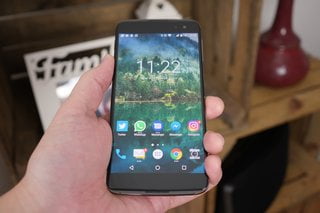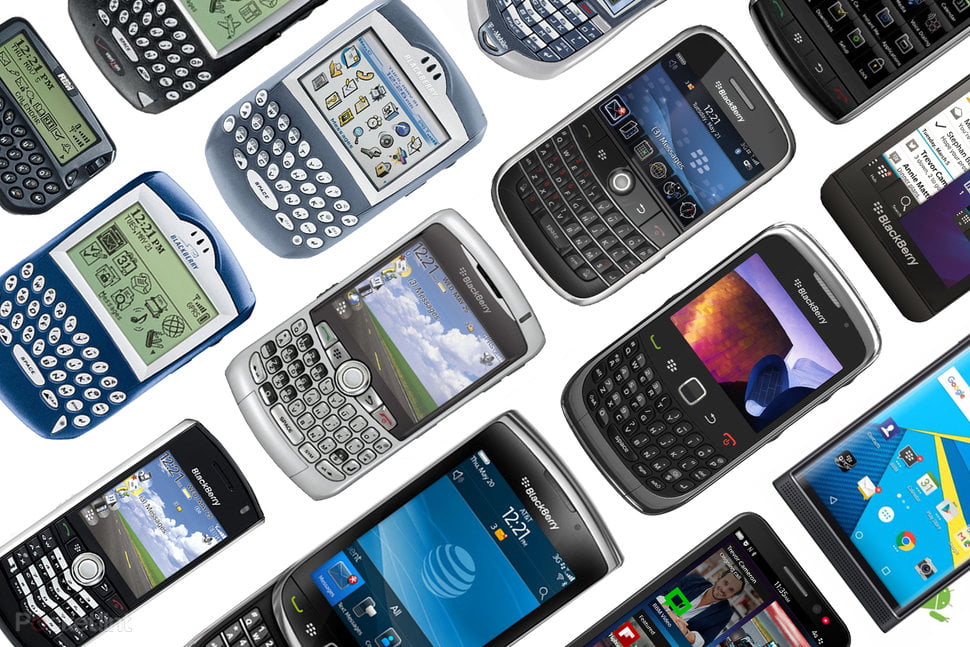
BlackBerry has officially stopped building and designing its own phones. When that news broke, it was almost as dramatic as when it announced its first Android phone, the QWERTY-equipped PRIV.
For a company known for building its own phones, its own operating system and hardware keyboards, going all-out on a standard all-touch Android phone would have been a bit too much all at once. But now, the company’s latest flagship is exactly that.
Contents
BlackBerry DTEK60 preview: You’ve seen it before
If there’s something familiar to you about the way the DTEK60 looks, there’s good reason for that. BlackBerry has outsourced its product design and manufacturing to third parties. In this case, TCL Communication, the same company that builds phones bearing Alcatel’s brand name – more locally – Vodafone’s.
- Vodafone Smart Platinum 7 Review: Power and elegance without the price tag
- BlackBerry DTEK60 vs BlackBerry DTEK50: What’s the difference?
- BlackBerry DTEK60: Release date, price and everything you need to know
For all intents and purposes, this is an Alcatel Idol 4S or Vodafone Smart Platinum 7, at least from a design perspective. It has different, better internals though.
It’s an all glass and metal affair, with the soft-finish metal frame sandwiched between two layers of glass. Unlike the DTEK50, BlackBerry opted not to replace the glass with a grippy plastic, and we think that was a good choice, mostly.
Glass does have its downsides, so while it may be very pretty, it’s also very slippery and attracts fingerprints without any effort.
The dark grey finish under the glass on the back is subtle and attractive, it’s just a shame the round camera protrudes so far. It’s not only an eye sore, it stops the phone from lying flat on its back.
Another curious design choice – which is something we expect from this device – is the power/sleep button positioning. It’s on the left edge, right near the top corner of the device. It’s only easy to reach if the phone is in your left hand. Thankfully, you can just double-tap the screen to wake the phone up.
The front of the phone is mostly just a big, black slab of glass. Like its doppelgängers, it has a two front-firing speakers build in to the frame which extends slightly beyond the top and bottom edges of the glass panel.
All in all, it’s attractive, but it’s definitely not a one-handed device. As 5.5-inch phones go, this feels like one of the biggest around.
BlackBerry DTEK60 preview: Power on display
Like the best phones out there, the DTEK60’s 5.5-inch screen boasts a resolution of 1440 x 2560, commonly referred to as Quad HD. What’s more, it’s an AMOLED panel, so blacks are really black and colours are very vibrant on first impressions. It looks particularly striking when the monochromatic notifications show up on the ambient display with the phone on standby.
One of our complaints with the similar-looking Platinum 7 was its performance. In that phone, a Snapdragon 6-series chip runs the show, but does so with some noticeably stuttering and lag here and there. Similarly, the DTEK50 was a bit laggy and slow.
On first impressions, the DTEK60 is much faster and smoother than both. And you’d expect as much when you read the spec sheet. Matching the most powerful phones out there, BlackBerry opted for a Snapdragon 820 processor and paired it with a generous 4GB of RAM and 32GB storage. That should ensure stable, fast performance. You can expand the storage up to 256GB using a microSD card.
The 3,000mAh battery inside should be more than enough to get through a day’s use, and with Quick Charge 3.0 support, it can be topped up quickly again if depleted. A Type-C port ensures the phone is at least keeping up with market trends.
BlackBerry DTEK60 preview: Android’s missing piece?
You could easily criticise BlackBerry for releasing a phone which looks so similar to other devices available, and not add anything to the mix except more powerful components. But for some, BlackBerry’s software is what makes the company’s offering so worthwhile.
The DTEK60 app which comes pre-installed not only gives you an easy to understand snapshot at the state of the phone’s security, it also helps you dig deep in to which apps have accessed which features, and how many times. You can also manually switch off permissions like access to camera, mics, contact details etc. for every app installed on the phone.
Then there’s the BlackBerry Hub which conveniently pulls in notifications from most popular apps in to one big inbox. From here you can keep an eye on messages, updates and replies from the likes of Instagram, WhatsApp, Gmail, Facebook Messenger, Skype and Slack.
The productivity tab lives on from the previous Android phones and gives quick access to recently called contacts, upcoming calendar events, tasks and unread messages in the Hub. Similar to the Edge Panel on Samsung phones, it slides in from the edge of the screen as a dark, almost completely opaque layer.
As well as all that, you can quickly access pop-up widgets for any app with widget support by swiping up on their icon from the home screen. That means you can get a quick glance at your email inbox, or calendar events, without having to have widgets permanently stamped on the screen.
All this runs on Android 6.0 Marshmallow which, although not the most recent software, is left in a stock-like form on the BlackBerry. That means no custom themes, or heavy skinning to slow down the performance. With BlackBerry’s focus on security, the monthly security patches delivered by Google arrive on DTEK60 virtually as soon as they’re pushed to Nexus and Pixel users too.
It all ties in together to create a version of Android which, for some, will be so much more convenient than normal Android.
BlackBerry DTEK60 preview: Mega-pixels
While the camera in our unit hasn’t been thoroughly tested yet, we’re curious to see the results from the 21-megapixel sensor on the back. It has phase detection autofocus, a dual tone flash and f/2.0 aperture. As you’d expect, it also records video in resolutions up to 4K.
Early signs suggest it’s a fairly decent camera, although it hasn’t blown us away like the Pixel and Galaxy S7 did. For selfie-lovers, there’s an 8-megapixel camera on the front equipped with 1080p video recording an an f/2.2 aperture.
First Impressions
With the OnePlus 3 on the market disrupting everything, it’s easy to look at a device like the BlackBerry DTEK60 and think it’s far too expensive. But, at the same time, similarly specced products from the likes of Samsung, Google, Apple and LG all cost more than the BlackBerry.
The spec list reads as well as pretty much any flagship smartphone out there. It has the Quad HD screen, Snapdragon 820 processor and 4GB RAM. But it’s still hard to escape the fact that this is a more powerful version of the Vodafone Smart Platinum 7 we reviewed a few months back, and that only costs £300.
The question – which remains unanswered for now – is whether the extra performance and higher-end components, plus BlackBerry’s software and services, make the phone worth £175 more. We’ll be bringing you the answer to that when we publish our full review.
[Source:-Pocket Lint]




